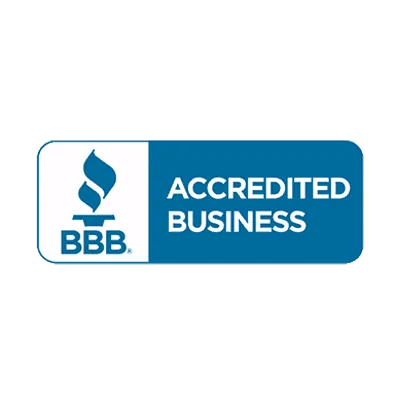PHILADELPHIA BURN INJURY LAWYERS
OUR PERSONAL INJURY LAW FIRM HANDLES COMPLEX CLAIMS FOR BURN VICTIMS THROUGHOUT PHILADELPHIA, PA

Burns are serious injuries that can lead to a lifetime of debilitating pain and suffering, loss of bodily function, lost wages, and even death. Most severe burns can lead to disfigurement and ultimately burn victims who face emotional issues for the remainder of their lives. This is why any burn victim must consult with a Philadelphia burn injury lawyer to determine the cause of the burn injury, the extent of the injury sustained was the burn the result of another party’s negligence, and whether there is a burn injury case to be made to recover compensation.
A burn victim who has suffered burn injuries as a result of someone else’s negligence has the right to bring a personal injury claim. Personal injury includes all claims resulting from burn injuries, including psychological and emotional problems resulting from another’s negligent conduct, behavior, or even failure to act.
When you suffer a burn injury as a result of another person’s negligence, you may be able to file a personal injury lawsuit and/or workers’ compensation claim with the help of a Philadelphia burn injury attorney to seek compensation for the harm done to you including
Larry Pitt & Associates has been representing burn injury cases in and around Philadelphia, PA for more than 40 years. Our team has the experienced burn injury lawyers you need to evaluate your serious burn injury case, determine your burn injury needs, medical needs, and physical therapy requirements, and then provide legal representation, manage the insurance claims process, negotiate with the insurance company, and if necessary, file the personal injury cases required to ensure all burn victims are able to heal and obtain the maximum compensation they are entitled to through the legal process.
Our Philadelphia burn injury lawyers know that accidents are traumatic and life-changing and that the insurance companies play hardball and try to make personal injury cases go away without them having to pay. This is why anyone who has suffered burn injuries in an accident will need a skilled Philadelphia burn injury lawyer who will fight for your rights in and out of court. If you were hurt by someone else’s actions, we are ready and able to fight for your rights and your future.
GET A FREE CONSULTATION WITH LARRY PITT
CONTACT OUR PHILADELPHIA BURN INJURY LAWYERS FOR A FREE CONSULTATION
At Larry Pitt & Associates, our burn injury lawyers have the resources and experience necessary to handle any type of burn injury claim. We are committed to helping victims get full compensation for their burn injuries and will fight aggressively on your behalf to make sure you are treated fairly and justly. We are proud to serve clients throughout:
- Lehigh County
- Lancaster County
- Northampton County
CAUSES OF SEVERE BURN INJURIES IN PHILADELPHIA
A serious burn injury occurs from a variety of accidents, including:
- Auto Accidents
- Chemical Burns
- Electrical Burns
- Hot Liquids
- Fire & Explosion Accidents
- Defective Products
- Radiation Exposure
- Friction Burns
- House Fires
- Flash Burns
- Sudden Intense Heat
- Thermal Burns
- Workplace Accidents
- Industrial Accidents
If you or someone close to you has suffered burns due to an accident in Philadelphia, contact an experienced burn injury attorney at Larry Pitt & Associates for a free case evaluation. We are here to help you every step of the way and will fight hard on your behalf to make sure you get full and fair compensation for your burn injuries. Our Philadelphia burn injury attorneys have recovered millions of dollars in verdicts and settlements for clients throughout Philadelphia and we are ready to put our experience to work for you.
WHAT ARE THE MOST COMMON TYPES OF BURNS?
Burn injuries can range from mild to severe, and there are several different classifications of burns that may be sustained from an accident. Most commonly, a burn may be classified as first-degree, second-degree, third-degree, or fourth-degree burns:
- First-Degree Burn – These are the least serious type of burn injury, resulting in minor inflammation, redness, and pain. Only the top layer of skin (outer layer), or epidermis, is impacted. These are considered minor burns with mild pain.
- Second-Degree Burn – Second-degree burns are more serious than first-degree burns and can cause blistering of the skin, as well as severe pain and inflammation. A second-degree burn affects the epidermis and the dermis, the layer of skin beneath the epidermis. A second-degree burn could cause severe scarring and will require medical care.
- Third Degree Burn –Third-degree burns can require extensive medical treatment. Third-degree burns affect the epidermis, dermis, and subcutaneous tissue, the layer of fat and connective tissue beneath the dermis. They involve damage to all layers of the skin and may lead to permanent scarring and disfigurement, permanent damage, severe scarring, skin grafts, and possibly nerve damage.
- Fourth-degree Burn – A fourth-degree burn affects the epidermis, dermis, subcutaneous tissue, underlying muscle and bone, and internal organs. This is the most serious burn injury which can result in death. If a burn victim survives, they will require extensive medical treatment, financial compensation for the injury, pain and suffering, emotional trauma, lost income, and possibly a lifetime of care.
No matter what kind of burn injury you or a loved one has suffered, our Philadelphia burn injury lawyers are here to help. We understand that this is an incredibly difficult time for you, and will do everything we can to make the process as smooth and stress-free as possible. We will take the time to thoroughly evaluate your case, collect evidence, and build a strong legal strategy that is tailored to your unique needs to make sure the property owner or other liable party’s negligence is covered by insurance or litigated in court.
WHAT ARE THE LONG-LASTING INJURIES CAUSED BY A BURN?
Serious burns can cause extreme injury to the skin, the body, and the mind. They can either have short or long-lasting damage depending on the nature of the burns. This could include some or all of the following:
- Secondary Infections
- Fever
- Itching
- Depression
- Tissue Damage
- Organ Failure
- Poor Circulation
The more serious burn injuries, as outlined above, can result in disfigurement, change in physical appearance, nerve damage, and death. Recovering from a severe burn injury may require rehabilitation and reconstructive surgery which come with long-term medical care and medical expenses. The process of recovering from a burn can be extremely painful, costly, and disruptive to daily work and personal life for yourself and your loved ones.
The Philadelphia burn injury lawyers at Larry Pitt & Associates have decades of experience with personal injury claims arising out of burns. We know that those who suffer burns may have a long and painful road to recovery ahead. Our goal is to treat your case with compassion and determination so that you can heal while we focus on protecting your legal rights and making sure that you collect monetary damages from the liable party.
WHO CAN BE HELD LIABLE FOR BURN INJURIES?
A burn injury case is essentially a personal injury claim. This means that the party or entity whose negligent conduct led to your burn injuries will be responsible. The liable party may be a property owner, as might be the case in a house fire, or a chemical manufacturer, a restaurant owner, a vehicle driver, or an individual. A burn injury case is as unique as any other personal injury case and will be dependent on the facts.
As your burn injury lawyer, it is our obligation to identify all the liable parties, collect evidence and medical records, negotiate with insurance companies and if necessary litigate your case in court.
WHY HIRE LARRY PITT & ASSOCIATES FOR YOUR BURN INJURY CLAM
At Larry Pitt & Associates, we are passionate about helping accident victims in Philadelphia get the justice and money they deserve for their burn injuries. Our experienced personal injury attorneys have a long track record of successful results and will fight tirelessly to ensure that your rights are fully protected. We understand how stressful and overwhelming burn injuries can be, which is why we strive to make the process as straightforward as possible for our clients.
If you or someone close to you has suffered a burn injury in Philadelphia, contact Larry Pitt & Associates today for a free consultation. We are here to answer any questions you may have and will work hard to ensure that your rights are fully protected throughout the legal process.
HELPING BURN INJURY VICTIMS SEEK COMPENSATION FOR SEVERE BURNS
Burn injuries are among the most painful and traumatic kinds of injury to deal with. Not only do you have to suffer through extensive recovery times and long-term scarring, but also, in many cases, the psychological effects can linger on for years after recovering from the physical burns themselves.
Our Philadelphia burn injury lawyers know that when someone else is responsible for your burn injury, you may be entitled to compensation for medical bills, lost wages, pain & suffering, and other costs associated with your Philadelphia burn injuries. Our team is experienced in handling burn injury cases of all kinds and will fight aggressively on your behalf to ensure you are treated fairly and justly.
From first-degree burns that require minimal treatment to third-degree burns that may require long-term care, our attorneys have the experience to handle your claim. We understand the legal aspects of burn injury cases and can help you obtain compensation for all types of burns resulting from another’s negligence.
What Our Clients Say






















